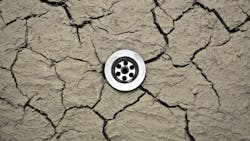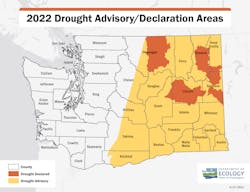Parts of eastern Wash. extend drought designation
A cool and wet spring brought relief to much of Washington following the drought of 2021, but in a few parts of eastern Washington, the drought’s effects have lingered, announced the state’s Department of Ecology
Continuing drought concerns led the Washington Department of Ecology to issue an amended drought declaration for watersheds in eight eastern Washington counties that will go into effect June 1.
Under the amended declaration, five watersheds spanning parts of Spokane, Lincoln, Grant, Adams, Whitman, Stevens, Okanogan and Pend Oreille counties will remain in “drought emergency” status.
All other counties east of the Cascade Mountains will be downgraded to “drought advisory” status. Counties west of the Cascade Mountains no longer fall under drought conditions.
That declaration was set to expire June 1, 2022. Ecology announced that its new amended declaration extended that to June 1, 2023 – but only for about 9 percent of the state.
According to state law, a drought can be declared when the water supply in an area is below 75 percent of normal and there is an expectation of undue hardship.
The areas still under an emergency drought declaration simply haven’t gotten enough precipitation to recover from last year’s hardships, said Ecology drought coordinator Jeff Marti.
“2021 saw extreme temperatures and near record-low precipitation across much of the state,” Marti said. “In 2022, conditions have been much more normal, but we’re still trying to make up a deficit in some places. Extending the drought declaration for these areas will give us more tools to manage water supplies and respond to changing conditions.”
Impacts from last year’s drought that are expected to continue through this summer include low soil moisture, dried-out ponds, earlier-than-normal curtailments for irrigators in Colville, the Little Spokane River and Hangman Creek, and low reservoir storage in Okanogan County.
Ecology stated that declaring a drought emergency allows it to process emergency water rights permits and expedite requests for emergency water right transfers..

